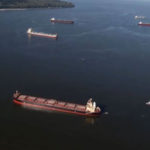Classification in the digital age

DNV GL’s Data Smart Classification, or “D-Class” development project aims to utilize and coordinate advanced technology to make DP system verification schedules much more flexible and efficient and, at the same time, less disruptive and burdensome for operators while ensuring the highest levels of equipment and system integrity and safety.
A new toolbox for remote interaction
The fourth industrial revolution has brought smart systems to the shipping and offshore industries, opening up numerous innovative ways to interact remotely with on-board equipment. Broadband data transmission via satellite and cloud computing along with advanced sensors and continuous monitoring functionality, as well as designed-to-be-verified and verify-on-demand capabilities, offer a wide range of possibilities to streamline and improve the DP verification process. Equipment manufacturers are incorporating hardware and software into their systems that enable system self-verification, automated testing, secure and tamper-proof collection and remote evaluation of verification relevant information, and also remote verification witnessing, says Aleks Karlsen, Senior Principal Specialist – DP Systems at DNV GL – Maritime.
“What makes DP system verification different from other class regimes is that the industry leaders demand that new evidence is created typically every year to verify that the barriers are in place and working,” Karlsen points out. This new evidence needs to be created actively by testing, he adds. Just evaluating some operational data won’t do.
The traditional way of performing verifications involves having surveyors physically present on board, whether it is to conduct tests, trials, audits and inspections, or for on-site witnessing. These procedures are heavily ‘manual’ in nature and must be executed on a rigid schedule. Checks of DP equipment failure response, performance and condition are not only performed by class but also by other bodies and consultants. Frequently when a verification is due the vessel must interrupt its work routine, and the surveying team must be flown in by helicopter. “This means that the ship must go off-hire for a certain amount of time, and that is costly,” explains Karlsen.
The future toolbox of technologies, methods and procedures available to class and other verification bodies will incorporate self-verifying systems, automated testing, extended simulation using ‘digital twins’, as well as remote tests and surveys. Traditional on-site checks will still be necessary in the foreseeable future, Karlsen points out, but the need for surveyors to be physically present will be reduced significantly: “It will be possible to perform remote or automated verification routines on a flexible schedule, for example, during waiting times when the vessel is not carrying out any work or is in port. This will minimize disruption of operations and costly downtime.” Automated reporting systems will feed operational and self-verification data, video footage and photos to the classification society to build a ‘body of evidence’ for the assessment of system integrity. “Since the collection of evidence and its analysis will no longer have to occur at the same time and place, verification can be performed at the convenience of the vessel operator,” says Karlsen.
Jan van Tiggelen, Principal Consultant Shipping Advisory at DNV GL – Maritime, stresses that the traditional verification practices will not be abolished and replaced all at once: “DNV GL will phase in the new approach step by step as the toolbox of innovative verification methods and self-verification features integrated in the DP equipment builds up. Our future D-Class will make sure this body of evidence can be trusted.”
Focus on reliable data
Whatever means are employed to obtain verification information, one aspect is of paramount importance: the reliability and trustworthiness of the data. Part of DNV GL’s approval process will be to make sure that each test is applied in the proper manner with the equipment or system in the correct operating mode; results must conform to the acceptance criteria in the actual test condition; and the physical condition of the equipment must be clearly established. Enhanced transparency of the entire verification process is another key demand that must be accounted for.
The D-Class project has been developing requirements for DP system verification and the technology it utilizes. When finalized, this new set of rules will specify, for example, how systems must perform to support digital verification, or how data must be compiled and processed to ensure the integrity of the results. For built-in verification functionality, the rules will require verification of scope and effectiveness of the verification method and specify the aggregation and delivery of results to make sure they are tamper- proof and genuine. The D-Class rules will also provide data management guidelines with a focus on data quality and security. They will contain, among other items, conditions for software development and the management of change processes.
DNV GL has been conducting workshops with numerous end users and DP system vendors to incorporate their perspectives into the rule development process while encouraging the necessary technical and software development work to establish a coherent infrastructure for digital verification. At the same time, the classification society has been running pilot projects jointly with manufacturers and customers to gain practical experience.
“We are now finishing the gathering of input from the industry and are planning to issue a document for public hearing. This will form the basis for our D-Class standard to be used for approval of all these DP functions and methods,” says van Tiggelen. “This set of requirements will serve our engineers and surveyors as a toolset for system approval and acceptance.” Karlsen adds: “The level of detail of this set of rules, procedures and tests will become more refined over time as we gather information and experience, and as new systems enter the market.”
Cost and safety benefits
Both DNV GL experts believe the new verification methods will expand the coverage of DP system verifications to include a wider range of DP equipment elements and functionalities, increase verification effectiveness and contribute to improved safety while reducing costs and increasing vessel and system availability. “Advanced system self-verification and automated testing functionalities should also improve verification quality and lead to more robust systems and operation,” stresses Karlsen.
The methods of this digital classification concept will certainly benefit other segments of the maritime industry, he points out. At the same time, the technologies it relies on build a bridge into the age of autonomous ship operation.
Source: DNV GL

 Hellenic Shipping News Worldwide Hellenic Shipping News Worldwide, Online Daily Newspaper on Hellenic and International Shipping
Hellenic Shipping News Worldwide Hellenic Shipping News Worldwide, Online Daily Newspaper on Hellenic and International Shipping























 PG-Software
PG-Software